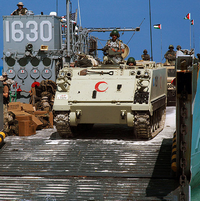The political situation in Egypt remains uncertain, with the still-in-question loyalty of the Egyptian army all that will determine whether or not President Hosni Mubarak survives as the country's leader. However, even if Mubarak manages to hold onto power, change is increasingly likely, and Egypt's potential political transformation over the upcoming months could have a large impact not only on the Egyptian military itself, but also on the military balance in the region. For the first time since the 1970s, Israeli military planners may have to take Egyptian military potential seriously, while other states in the region will also take note of any changes in the nature of Egypt's armed forces.
The Egyptian military is quite large, and enjoys access to a considerable amount of modern equipment (.pdf). The Egyptian army's most advanced main battle tank is the M1A1, although it also possesses a large number of updated M60s and some older Soviet tanks. Similarly, the F-16 makes up a bit more than half of the Egyptian air force's fighter aircraft inventory, with French, Chinese, and Soviet models filling out the rest. The navy has not been a priority for Egyptian military planners, although it does possess 10 relatively modern Oliver Hazard Perry-class frigates.
However, the Egyptian military does not have a reputation for excellence. In "Arabs at War," Kenneth Pollack detailed the Egyptian army's deficiencies in multiple conflicts, including the various wars with Israel and the 1991 Gulf War. The army was riven with internal division and poor communication, while promotion depended more on politics than on merit. Officers displayed little initiative and feared passing accurate information up or down the chain of command. In spite of its large size, the Egyptian army could not effectively project power beyond Egyptian borders, or even reliably defend those borders.

